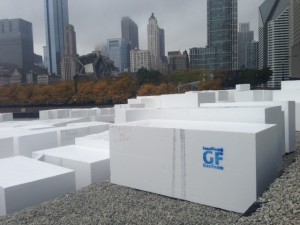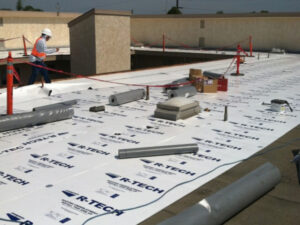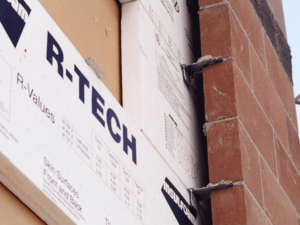LIGHTEN THE LOAD
21st century Civil Construction calls for modern building materials
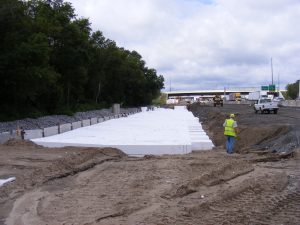
Soil has been used in construction applications for hundreds of years. Whether it was used to build shelters or walls, it was a staple in project material lists. Today, although basic construction methods have evolved, soil is still regularly used as a void-fill and build-up material due to its ready availability and relative ease of use. However, it is accompanied by numerous drawbacks. For example, soil is incredibly heavy, weighing from 110 to 120 pounds per cubic foot (lbs/cu ft). Soil also provides a number of challenges in Civil Construction applications with its tendency to shift, settle, absorb moisture and add lateral load to neighboring structures. Although soil is regularly used in Civil Construction projects, it may not necessarily be the best fill material.
Geofoam is one modern alternative to soil that is gaining traction in the Civil Construction industry. It is an ultra-lightweight EPS fill material at approximately 0.7 to 2.85 lbs/cu ft., depending on the product manufacturer. This is 1-2 percent the weight of soil. The material does not settle or shift and provides minimal or no lateral load on structures. Additionally, geofoam’s compressive resistance ranges from about 317 to 2,678 lbs/sq ft at a 1 percent strain. As long as combined dead/live loads do not exceed 1 percent strain, the material will not creep or experience plastic yield. These traits allow geofoam to offer predictable engineered values to simplify design and construction.
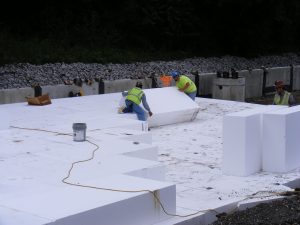 In Civil Construction job sites, geofoam is a good fit for rapid void-fill and build-up, and an effective cover for soft soil projects due to its lightweight, yet strong physical properties. For example, geofoam was specified for the I-80 / I-65 interchange in Gary, Indiana. For this project, the Federal Highway Administration (FHWA) recommended a net-zero load methodology for the roadbed to prevent post-construction settlement. To reduce the amount of excavation of the high-organic content soils, the contractor – Walsh Construction – used EPS geofoam blocks. A six-member crew installed 700 cubic yards of geofoam in one week while working four- to five-hour days. The geofoam was delivered to the job site on 32 flatbed truck loads, whereas traditional fills would have required more than 400 dump trucks in the highly congested project area leading into and out of metro Chicago.
In Civil Construction job sites, geofoam is a good fit for rapid void-fill and build-up, and an effective cover for soft soil projects due to its lightweight, yet strong physical properties. For example, geofoam was specified for the I-80 / I-65 interchange in Gary, Indiana. For this project, the Federal Highway Administration (FHWA) recommended a net-zero load methodology for the roadbed to prevent post-construction settlement. To reduce the amount of excavation of the high-organic content soils, the contractor – Walsh Construction – used EPS geofoam blocks. A six-member crew installed 700 cubic yards of geofoam in one week while working four- to five-hour days. The geofoam was delivered to the job site on 32 flatbed truck loads, whereas traditional fills would have required more than 400 dump trucks in the highly congested project area leading into and out of metro Chicago.
“There’s no comparison to using traditional fill,” said Walsh Construction Site Supervisor Gary Walsh. “There are no lifts needed; we just unloaded the blocks and it installed fast.”
For more information about geofoam and its uses for your next project, visit our Geofoam Applications page.

